Search Articles
Skylights: June 2025
By Jim HendricksonBook Review: Star Gazers: Finding Joy in the Night Sky
By Francine JacksonIntroducing Asteroid 15022 Francinejackson
By Jim HendricksonBook Review: 100 Years of Planetaria: 100 Stories of People, Places, and Devices
By Francine JacksonDetermining the Date of Easter
By Francine JacksonUpcoming Solar & Lunar Eclipses
By Jim HendricksonIn Loving Memory of David A Huestis (1953-2024)
By Walter SmithDavid Huestis: A Remembrance
By Greg ShanosRemembering Dave Huestis
By Joyce “JT” TowneFebruary Night Sky Notes: How Can You Help Curb Light Pollution?
By David ProsperAstronomical Nuggets in Las Vegas
By Francine JacksonSkyscrapers in Paradise- Part II
By Greg ShanosAstrophotography 2024
By John KocurThe Four Supermoons of 2024
By Greg ShanosSkylights: December 2024
By Jim HendricksonFrom the Annals of Popular Astronomy 2
By Rick LynchBook Review: The Moon That Wasn’t: The Saga of Venus’ Spurious Satellite
By Francine JacksonFrom the Annals of Popular Astronomy
By Rick LynchRhode Island Joins the DarkSky Community
By Katrina ShepardDoes Venus Have a Moon?
By Francine JacksonAugust Night Sky Notes: Seeing Double
By Kat TrocheSolar Activity: July 19, 2024
By Conrad CardanoA Hero, a Crown, and Possibly a Nova!
By Vivian WhiteUsing the ZWO Seestar S50 Smart Telescope on Open Nights
By Laura LandenBook Review: The Dawn of a Mindful Universe: A Manifesto for Humanity’s Future
By Francine JacksonI Remember Pat Armitage
By Francine JacksonSkyscrapers Merchandise is now available
By Kathy SiokMay’s Night Sky Notes: Stargazing for Beginners
By Kat TrocheParticipate in Eclipse Science
By Kat TrocheA Trip to the Museum of Science & Charles Hayden Planetarium
By Francine JacksonThe Smart Telescope Revolution
By Jeff PadellLunar Imaging with the ZWO Seestar S50 Smart Scope
By Greg ShanosBook Review: 5 Little Dwarf Planets: A Rhyming Solar System Book
By Francine JacksonReview: ZWO Seestar S50 All-in-One Smart Telescope
By Jeff PadellConstant Companions: Circumpolar Constellations, Part II
By Kat TrocheLunar New Year 2024: Year of the Dragon
By Francine JacksonArno Penzias: 1933-2024
By Francine JacksonConstant Companions: Circumpolar Constellations, Part I
By Kat TrocheConnecting the ‘Dots’ with Asterisms
By Kat TrocheBook Review: Total Solar Eclipse: A Stellar Friendship Story
By Francine JacksonHalley's Comet at Aphelion
By Jim HendricksonA Flame in the Sky – the Orion Nebula
By Kat TrocheSearching for the Star of Bethlehem?
By Francine JacksonSpy the Seventh Planet, Uranus
By Liz KruesiAstroAssembly 2023 Astrophoto Contest Entires
By Rick LynchLunatic’s Corner: The South Pole-Aitken Basin
By Michael CorveseFrom Galileo to Clipper, Exploring Jupiter's Moons
By Vivian WhiteSaturn Now Has 146 Known Moons
By Francine JacksonA Visit to the Planetary Seekers, and Star Gazers Society
By Patricia LakeLooking Beyond the Stars
By Brian KruseMid-Autumn Festival
By Francine JacksonUpdate on the RadioJOVE Project
By Ed WalshSolar Activity: July 11, 2023
By Conrad CardanoSkyscrapers to Pilot Youth Program
By Michael CorveseAugust Blue Moon
By Francine JacksonFind A Ball of Stars
By Linda ShoreLook Up in the Sky - It’s a Bird
By Theresa SummerLunatic’s Corner: Crater and Rima Calippus
By Michael CorveseSupernova 2023ixf in M101 Discovered by Amateur Astronomer Koichi Itagaki
By Francine JacksonSolar Activity: May 10, 2023
By Conrad CardanoBook Review: Always Looking Up: Nancy Grace Roman, Astronomer
By Francine JacksonSolar Activity: March 29, 2023
By Conrad CardanoSeeing Venus in a Different Light
By Greg ShanosBook Review: Apollo Remastered - The Ultimate Photographic Record
By Francine JacksonSkylights: April 2023
By Jim HendricksonLunatic’s Corner: Crater Cleomedes
By Michael CorveseBook Review: Losing the Sky
By Francine JacksonLet’s Keep Our Night Sky As Dark As Possible
By Steve HubbardThe Clouded Out Lunar Occultation of Mars: January 31, 2023
By Greg ShanosSightings of Comet C/2022 E3 (ZTF)
By Craig CortisLunatic’s Corner: Crater Maurolycus
By Michael CorveseAstronomical Adventures in Iceland
By Jim HendricksonJulian Date 2460000: A Look Back & a Look Ahead
By Jim HendricksonHelp Save The Dark!
By Steve HubbardSpot the Messenger: Observe Mercury
By David ProsperGeminids Meteor Shower 2022 Observing Report
By Greg ShanosRegarding Local Light Pollution Concerns
By Francine JacksonLunatic’s Corner: Mysteries of Crater Schiller
By Michael CorveseFinding Pluto
By Lloyd MerrillThe Simple Pleasures of Observing a Lunar Eclipse
By Bob HortonIn Memory of Althea Doodson
By Linda BergemannBinoculars: A Great First Telescope
By David ProsperField Trip to Frosty Drew Observatory
By Michael CorveseBook Review: Stars in Your Hand: A Guide to 3D Printing the Cosmos
By Francine JacksonNo Replacement for Arecibo Telescope
By Francine JacksonRemembering Dave Rose
By Scott TracyCepheus: A House Fit for a King
By David ProsperBook Review: The Milky Way: An Autobiography of Our Galaxy
By Francine JacksonLunatic’s Corner: Hesiodus A
By Michael CorveseFomalhaut: Not So Lonely After All
By David ProsperThe Summer Triangle’s Hidden Treasures
By David Prosper45th Anniversary of Voyager
By Francine JacksonSolar Activity: August 3, 2022
By Conrad CardanoRemembering Dave Hurdis
By Mercedes A. Rivero H.Lunatic’s Corner: Vallis Schröteri
By Michael CorveseDog Days
By Francine JacksonNASA Wants its Cockroaches Back
By Francine JacksonArtemis 1: A Trip Around the Moon – and Back!
By David ProsperNASA's Astrophoto Challenges
By Linda BergemannFind Hercules and His Mighty Globular Clusters
By David ProsperSolar Activity: June 20, 2022
By Conrad CardanoWoonsocket Astronomy Club Update
By Mark MunkacsyObservations of the 2022 Tau Herculid Meteor Shower
By Greg ShanosA Part of Rhode Island History
By Francine JacksonSolstice Shadows
By David ProsperLunatic’s Corner: Crater Bullialdus
By Michael CorveseTo Navigate by the Stars
By Francine JacksonSkyscrapers Celebrate 90th Anniversary
By Dave HuestisCan We Save Time With the Sunshine Protection Act?
By Francine JacksonSpringtime Catspotting: Lynx and Leo Minor
By David ProsperEarth Day at WaterFire Arts Center
By Francine JacksonEmbracing the Equinox
By David ProsperBook Review: Vera Rubin: A Life
By Francine JacksonSkylights: March 2022
By Jim HendricksonTwo Snowstorms & a Cross-Quarter Day
By Francine JacksonHang Out with the Twins of Gemini
By David ProsperGeminids 2021 Observing Report
By Greg ShanosHunting the Hunter: Observing Orion
By David ProsperMovie Review: Don't Look Up
By Francine JacksonObserving Report: Time For A Late Autumn Shower
By Michael CorveseAn Inexpensive Piggyback Mount
By Robert JanusThe James Webb Space Telescope: Ready for Launch!
By David ProsperSolar Activity: November 3, 2021
By Conrad CardanoA Scorpion Tale
By Francine JacksonSolar Prominence: September 8, 2021
By Conrad CardanoNovember's Near-Total Lunar Eclipse
By Francine JacksonMeasure the Night Sky
By David ProsperWeird Ways to Observe the Moon
By David ProsperCarolyn Shoemaker: 1929-2021
By Francine JacksonCatch Andromeda Rising
By David ProsperSkylights: September 2021
By Jim HendricksonThe Karman Line: Defining the Edge of Space
By Francine JacksonCorner the Great Square of Pegasus
By David ProsperIn Memory of Tina Huestis
By Joyce “JT” TowneObserve the Milky Way and Great Rift
By David ProsperThe Space Shuttle: One Decade After
By Francine JacksonJohn Nevil Maskelyne & the First Movie of a Solar Eclipse
By Francine JacksonJohn Nevil Maskelyne & the First Movie of a Solar Eclipse
By Francine JacksonAstrophotography With Your Smartphone
By David ProsperSpectral Analysis of Class Be Star Nu Gem
By Conrad CardanoIn the Seventeen Years Since...
By Francine JacksonMy "Souvenir" of Ed Turco
By Craig CortisVirgo's Galactic Harvest
By David ProsperWatch the Lion: Celestial Wonders in Leo
By David ProsperSpace for Birds
By Francine JacksonMy Binocular Mount Project
By Bill WeberVesta: A Look Back
By Francine JacksonNight Sky Network 2020 Outreach Awards
By Linda BergemannTaking the Dog Stars for a Springtime Walk: Sirius and Procyon!
By David ProsperObserving the Winter Circle
By Dave HuestisRequiem for a Telescope
By Francine JacksonLanding On Mars: A Tricky Feat!
By David ProsperClock Face Curiosity: The Numeral IIII
By Francine JacksonCheck Your Sky’s Quality with Orion!
By David ProsperNew Problems for Radio Astronomy: The Rise of Starlink and the Loss of Arecibo
By Francine JacksonAstronomy & Climate
By Francine JacksonObserve the Skies Near Mars
By David ProsperFull Moons of October
By Jim HendricksonPhosphine in the Atmosphere of Venus
By Francine JacksonPerseid Meteor Shower Report
By Dave HuestisA Brief Observer’s Guide to Jupiter and Saturn
By Dave HuestisBook Review: Galaxies: Inside the Universe’s Star Cities
By Francine JacksonPierre Mechain: Messier's Rival Comet-Hunter
By Francine JacksonObserving Comet NEOWISE
By Craig Cortisin Memory of Michael Ambrose
By Steve SiokBook Review: Written in the Stars: Constellations, Facts and Folklore
By Francine JacksonPerseverance Mars Rover Launching in July
By Francine JacksonSergei Khrushchev: 1935-2020
By Francine JacksonComet NEOWISE in the Evening Sky
By Jim HendricksonCreate a Constellation
By Dave HuestisAshen Light
By Francine JacksonE. Margaret Burbidge: 1919-2020
By Francine JacksonMemories of Frank Dubeau
By Steve SiokFrank Dubeau
By Francine JacksonBecome a Citizen Scientist with NASA!
By David ProsperSpectrum of Algol
By Conrad Cardano50th Anniversary of Apollo 13
By Francine JacksonSupernova Deferred (for now), Easter, and a Meteor Shower
By Dave HuestisPluto at Ninety: Discovered, Demoted, Visited
By Dave HuestisKatherine Johnson: Spaceflight Pioneer
By Francine JacksonOuter Worlds: Take a Journey to Two Dwarf Planets
By Jim HendricksonThe Birds and the Stars
By Francine JacksonWilliam S. Penhallow: 1933 - 2020
By Francine JacksonObserving the Inner Solar System: Mercury and Venus
By Dave HuestisReturning to the Moon in the New Decade
By Francine JacksonDecoding the Star of Bethlehem
By Francine JacksonHistorical Perspective on Transits of Venus and Mercury
By Dave HuestisTransit of Mercury A Unique Astronomical Event
By Dave HuestisTransit of Mercury: Past, Present & Future
By Francine JacksonHigher Orbits Go for Launch
By Tracy PrellOctober Meteor Showers
By Dave HuestisUpdate on Finding HMS Endeavour
By Francine JacksonFrancine Jackson Receives Award from Middle Atlantic Planetarium Society
By Jim HendricksonSolar Variability: Our Inconstant Sun
By Dave HuestisSolar Spectrum in the Sky
By Francine JacksonNeptune at Opposition
By Jim HendricksonLammas
By Francine JacksonApollo's Muse
By Francine JacksonContribute to Your Apollo Memories Book
By Francine JacksonSummer Stargazing
By Dave HuestisBeyond the Clouds
By Francine JacksonA Relatively Significant Eclipse: May 29, 1919
By Francine JacksonBook Review: The Cosmic Mystery Tour: A High-Speed Journey Through Space and Time
By Francine JacksonOrion the Hunter
By Dave HuestisA Farewell to Mars Rover Opportunity
By Francine JacksonThe Shocking Story of Franklin Snow Huddy
By Richard SandersonThe Claggett Clockmakers of Newport
By Francine JacksonMessier's Comets
By Francine Jackson50th Anniversary of Apollo 8
By Francine JacksonAtmospheric Optics: Sun Dogs & Moon Dogs
By Francine JacksonSagittarius, the Archer
By Dave HuestisMars: Past, Present and Future
By Dave HuestisStunning Saturn Shares Summer Sky
By Dave HuestisAlan Bean 1932-2018
By Francine JacksonVenus: Mysteries of the Evening Star
By Francine JacksonOur Responsibility to be Defenders of the Night
By Francine JacksonAmateur Astronomer Makes First-of-its-Kind Supernova Discovery
By Francine JacksonThe Journey to Totality
By Dave HuestisBook Review: Magnitude - The Scale of the Universe
By Francine JacksonDecember marks the Anniversary of the First & Last of the Apollo Lunar Flights
By Francine JacksonIn Memory: Kent Cameron 1938-2017
By Francine JacksonTardigrades: The Hardiest Little Organisms
By Francine Jackson60th Anniversary of Sputnik
By Francine JacksonA Farewell to Cassini
By Francine JacksonVoyages to the Stars
By Francine JacksonLibrary Telescope Program is “Off the Ground”
By Linda BergemannBuild a Shoebox Pinhole Projection Eclipse Viewer
By Dave HuestisA Guide to the Total Solar Eclipse of August 21, 2017
By Dave HuestisA Guide to the Total Solar Eclipse of August 21, 2017: Part 2
By Dave HuestisStar Spangled Banner
By Francine JacksonRainbow Over Seagrave
By Francine JacksonThe Sun, Moon, Stars, and the Dung Beetle
By Francine JacksonAstronomical Events Determine Easter Observance
By Dave HuestisAppreciating the Nature of a Solar Eclipse
By Francine Jackson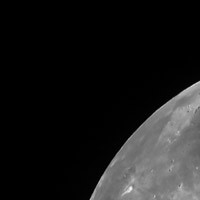
Observing the Last Quarter Moon
By Dave HuestisBook Review: The Glass Universe
By Francine JacksonGene Cernan: Last Man on the Moon
By Francine JacksonAstronomical Highlights of 2017 Including the Great American Total Solar Eclipse
By Dave HuestisIn Memory of Astronaut John Glenn
By Francine JacksonThe Mystery of the Christmas Star
By Dave HuestisReflections on November's Super Moon
By Francine JacksonTransit of Venus Finding May Help Detection of Exoplanet Magnetic Fields
By Francine JacksonDarkest Skies in Southern New England
By Dave HuestisThe Great Moon Hoax of 1835
By Francine JacksonObserving Neptune in 2016
By Jim HendricksonSkywatching for a Saturn Year
By Jim HendricksonDog Days
By Francine JacksonAstro Humor & Two Late-July Meteor Showers
By Dave HuestisAsteroid Day
By Francine JacksonShipwrecks & Transits
By Francine JacksonFinding Pluto
By Jim HendricksonTransit of Mercury: An Infrequent Astronomical Event
By Dave HuestisAmazon Smile Program for Skyscrapers, Inc.
By Tracy PrellRemembering Comet Halley: 30 Years Later
By Francine JacksonThe Upcoming Transit of Mercury
By Francine JacksonThe Precession of the Equinoxes
By Francine JacksonStories in the Sky: Andromeda, the Chained Lady
By Dave HuestisLeap Year & the Date of Washington's Birthday
By Francine JacksonCentennial of the Discovery of the Proper Motion of Barnard’s Star
By Francine JacksonIn Memory: Roger Menard and Minka Wescott
By Francine JacksonA Look Inside Venus
By Francine JacksonAlex Bergemann Promoted to Eagle Scout
By Dave HuestisRosertta Update
By Francine JacksonNew Horizons Spacecraft to Encounter Pluto
By Dave HuestisCelebrating the Pluto Encounter
By Francine JacksonPlans for Visual Solar Spectroscope
By Gerry DyckChester W. Siok : October 29, 1915 – April 11, 2015
By Kathy SiokRings of the Solar System
By Francine JacksonDawn Arrives at Ceres
By Francine JacksonReason for the Season(s)
By Dave HuestisObserving the Winter Circle
By Dave HuestisA Night at Foxwoods
By Francine JacksonMeteor Shower Prospects for 2015 & Other Astronomical Highlights
By Dave HuestisInternational Year of Light 2015
By Francine JacksonStar of Bethlehem
By Francine JacksonIn Memory of Walter Dowhyj
By Francine JacksonM31: The Great Galaxy in Andromeda
By Francine JacksonA Busy Month for Astronomy Enthusiasts
By Dave HuestisFomalhaut
By Francine JacksonSeagrave Memorial Observatory Centennial (1914-2014)
By Dave HuestisCapturing Neptune & Triton with a Small Telescope
By Jim HendricksonSeptember: Prime Time for Asteroid Hunting
By Francine JacksonDog Days
By Francine Jackson“Meteor-ocre” Prospects for Perseids & What’s Up in Cygnus
By Dave HuestisMemories of Bill Luzader from the Planetarium Society
By Francine JacksonOn the 45th Anniversary of Apollo 11
By Francine JacksonWhat’s Up in Space News? July 2014
By Jason MajorThe Quest for Pluto
By Jim HendricksonBill Luzader 1949-2014
By Bob HortonMagnificent Saturn
By Dave HuestisM97: The Owl Nebula
By Glenn ChapleNew England Astronomy: It's More Than Just Cloudy Skies
By Francine JacksonThe Double Quasar & Gravitational Lensing
By Pete PetersonWhat’s Up in Space News? June 2014
By Jason MajorMars Madness
By Dave HuestisSeeing into the Asteroid Belt
By Craig CortisOrion GrandView 16-48x65mm Spotting Scope
By Craig CortisRemembering John C. Houbolt and LADEE, Pioneers of Lunar Exploration
By Francine JacksonDate of Easter
By Francine JacksonWhat’s Up in Space News? April 2014
By Jason MajorGhost of Jupiter: NGC 3242
By Glenn ChapleSee the Three Largest Worlds Between Earth & Jupiter
By Jim HendricksonThe Names Behind the Observatories: Part 1
By Mark SwebergA December’s Winter Night
By Mark SwebergScience Teachers Sunspot Count Challenge
By Dave HuestisA Review of Harrington's Spring Sky Highlights
By Francine JacksonWhat’s Up in Space News? March 2014
By Jason MajorM46 & NGC 2438
By Glenn ChapleJohn Dobson (1915-2014)
By Francine JacksonDiamonds Upon Black Velvet
By Dave HuestisKemble's Cascade & NGC 1502
By Glenn ChapleComet Lovejoy meets Venus
By Mark SwebergHappy Perihelion!
By Francine JacksonMeteor Shower Prospects for 2014 and other Astronomical Highlights
By Dave HuestisBob's Aurora Borealis
By Mark SwebergKaffaljidhma: Double Star in Cetus
By Glenn ChapleNGC 891: Edge-on Galaxy in Andromeda
By Glenn ChapleRemembering Carl Sagan
By Mark SwebergSee Rocket Launches & Space Stations From Your Backyard
By Francine JacksonMagnitude: a Bright Idea
By Dave HuestisSpaceport Charlestown: Project Comet Chase 1999
By Francine JacksonA Constellation I Have Learned
By Mark SwebergPreparing for Comet ISON: A Comet Primer for Casual Stargazers
By Dave HuestisSamhain
By Francine JacksonFly Me to the Moon
By Mark SwebergThe Legacy of Kepler Space Telescope & Our Own Solar System's Robotic Explorers
By Francine JacksonSeptember Sky Bites & Potential Observing Hazards
By Dave HuestisSunrise, Sunset
By Mark SwebergObserving Uranus in 2013
By Jim HendricksonWhat do you see when you look at the Moon?
By Francine JacksonLight
By Mark SwebergObserving Neptune in 2013
By Jim HendricksonOur friend Sol
By Mark SwebergNaming July's Full Moon "Apollo Moon" in Honor of the First Moon Landing
By Francine JacksonSome Treasures of the Summer Milky Way From Perseus to Sagittarius
By Dave HuestisM80: Globular Cluster in Scorpius
By Glenn ChapleNGC 6939: Open Cluster in Cepheus
By Glenn ChapleFull Circle: An Amateur Astronomer's Journey Home
By Matt WhiteThe Art of the Crescent Moon
By Francine JacksonA Visit to Morehead Planetarium
By Jim HendricksonBinary Star: Xi Boötes
By Scott MacNeillNu Scorpii
By Glenn ChapleM104: The Sombrero Galaxy
By Glenn ChapleUniversity of Rhode Island Planetarium
By Francine JacksonM101: Spiral Galaxy in Ursa Major
By Glenn ChapleSee Comet PanSTARRS in March and April
By Dave HuestisSpring
By Francine JacksonM78: Reflection Nebula in Orion
By Glenn ChapleTriple Star 40 Eridani
By Glenn ChapleMeteor Shower Prospects for 2013 and other Astronomical Highlights
By Dave HuestisNGC 7662: the Blue Snowball
By Glenn ChapleMaserthim (γ Arietis)
By Glenn ChapleDoomsday 2012: Down for the (Long) Count?
By Dave HuestisPromising Prospects for December’s Geminid Meteor Shower
By Dave HuestisDecember Long Night Moon
By Francine JacksonNovember 2012 Comet Update
By Bob NapierNovember Moon
By Francine JacksonStruve 2816 and 2819: Triple and Double Stars in Cepheus
By Glenn ChapleMoon of the Falling Leaves
By Francine JacksonNGC 6934: Globular Cluster in Delphinus
By Glenn ChapleAutumnal Equinox and Observing the Outer Solar System
By Dave HuestisThe Moon: It's just a Phase it's Going Through
By Dave HuestisObserving the First Quarter Moon
By Dave HuestisRemembering Neil Armstrong
By Francine JacksonSeptember Harvest Moon
By Francine JacksonCoathanger Asterism in Vulpecula
By Glenn ChapleCuriosity to Explore Mars
By Dave HuestisM22: Globular Cluster in Sagittarius
By Glenn ChapleAsteroids, Meteors, & the Dog Days
By Jim HendricksonThe Lunar X
By Glenn ChapleJuly's Apollo Moon
By Francine JacksonCharlestown Approves Town Lighting Ordinance
By Francine JacksonSkyscrapers on Display at the Glocester Manton Library
By Dave HuestisSaturn, the “Recruiter”
By Dave HuestisBe Prepared for the Transit of Venus: June 5, 2012
By Dave HuestisM5: Globular Cluster in Serpens
By Glenn ChapleTransit of Venus: A Rare Astronomical Event
By Dave HuestisShooting Stars of May
By Dave HuestisPorrima: Binary Star in Virgo
By Glenn ChapleA General History and Significance of the Transits of Venus
By Francine Jackson
Building my Merry-Go-Round Observatory
By Gerry DyckAlgieba: Double Star in Leo
By Glenn ChapleSolar Activity Primer
By Dave HuestisNorthern Lights Primer
By Dave HuestisApril Moon
By Francine JacksonApril Meteor Shower
By Dave HuestisMarvelous Mars
By Dave HuestisMars History Highlights
By Dave HuestisVariable Star R Leonis
By Glenn ChapleThe Moon in March
By Francine JacksonObserving the Planet Venus
By Dave Huestis433 Eros
By Glenn ChapleM74: Galaxy in Pisces
By Glenn ChapleThe Full Moon in January
By Francine JacksonObserve Delta Cephei
By Gerry DyckDecember Constellations & Folklore
By Francine JacksonM33: Galaxy in Triangulum
By Glenn ChapleNovember Constellations & Folklore
By Francine JacksonAlmach
By Glenn Chaple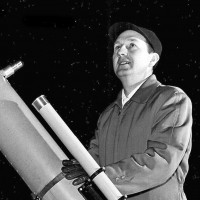
John T. Hopf (1920-2011)
By Bob Napierβ Cygni (Albireo)
By Glenn ChapleOrdinary turns into the Extraordinary
By Tom ThibaultOctober Constellations & Folklore
By Francine JacksonLets All Observe Neptune’s First Year Anniversary
By Steve Siok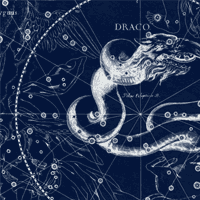
September Constellations & Folklore
By Francine Jackson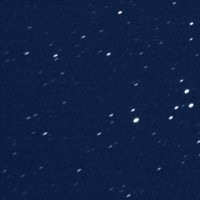
The Ships of Sheliak
By Jim HendricksonM56: Globular Cluster in Lyra
By Glenn Chaple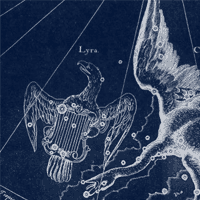
August Contellations & Folklore
By Francine Jackson
The 30-Year Legacy of NASA's Remarkable Spacecraft: The Space Shuttles
By Jim Hendrickson
Frosty Drew Observatory
By Dave HuestisM92: Globular Cluster in Hercules
By Glenn Chaple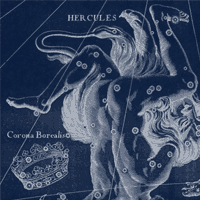
July Constellations & Folklore
By Francine Jacksonβ Scorpii
By Glenn Chaple
Midland Mall Remembrance
By Dave Huestis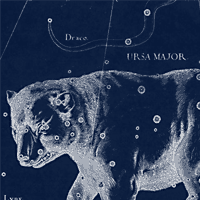
The Circumpolar Constellations
By Francine Jackson
Kennedy Space Center: The Gateway to the Stars
By Tom ThibaultMay Constellations & Folklore
By Francine Jackson3C 273: Quasar in Virgo
By Glenn ChapleThe Constellations of Spring
By Francine JacksonNGC 2903: Spiral Galaxy in Leo
By Glenn Chaple
Seeking Markarian 421: The Brightest Blazar
By Craig CortisCastor: alpha (α) Geminorum
By Glenn Chaple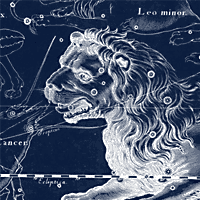
In Like a Lion… Out Like a Lamb
By Francine Jackson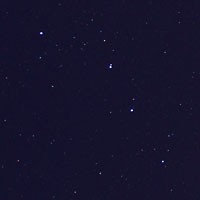
Getting to Know the Big Dipper
By Jim Hendrickson
Orion the Hunter
By Dave Huestis
February Constellations & Folklore
By Francine Jacksonβ Monocerotis
By Glenn ChapleJanuary Constellations & Folklore
By Francine JacksonA “Star” That Wasn’t Supposed to be There
By Craig CortisNGC 457 (the “ET Cluster”)
By Glenn Chaple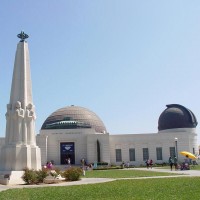
There’s Always Time for Astronomical Pleasures
By Tom ThibaultSky Notes: November 2010
By Francine JacksonDelta (δ) and Mu (μ) Cephei
By Glenn ChapleSky Notes: October 2010
By Francine JacksonThe “Little Big Dipper”
By Jim HendricksonA Star-Hop that Finally Worked!
By Craig CortisStella-this and Stella-that
By Gerry Dyck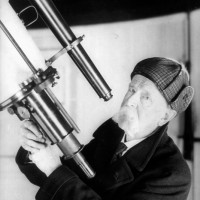
The Milky Way
By Glenn ChapleSky Notes: September 2010
By Francine JacksonCorona Australis & the Southern Limits of Sagittarius
By Craig CortisIC 4665
By Glenn ChapleBook Review: The Sun and the Moon
By Francine Jackson
NGC 6207
By Glenn Chaple
It’s Full of Stars!
By Dave HuestisIzar (ε Boötis)
By Glenn ChapleCan You Find a Quasar? (You Might be Surprised)
By Craig CortisM40: The “Unknown” Messier Object
By Glenn Chaple
Celebrating the Sesquicentennial Birthday of Frank Evans Seagrave (1860–1934)
By Dave HuestisSirius
By Glenn Chapleh 3945 Canis Majoris
By Glenn ChapleSouthern Viewing at Sea
By Tom ThibaultBeta Orionis (Rigel)
By Glenn ChapleIway Bridge Light Pillar Should Be Shut Down
By Jim HendricksonOmicron Ceti (Mira, the “Wonderful”)
By Glenn ChapleAvoiding the “Trash Scope” Trap
By Craig Cortis2009 Leonids Observing Report
By Dave HuestisTaking the Broad View: Skywatching with your Naked Eyes
By Craig CortisBeta Persei (Algol, the "Demon Star")
By Glenn ChapleNGC 7293: the Helix Nebula
By Glenn ChapleEpsilon Pegasi: The Pendulum Star
By Glenn ChapleCygnus X-1: A Black Hole You Can Find!
By Craig CortisVisual Observing With The 40-Inch Yerkes Refractor
By Steve Hubbard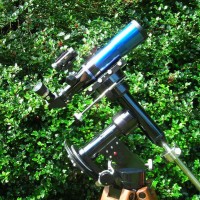
Building an Equatorial Mount
By James Brenek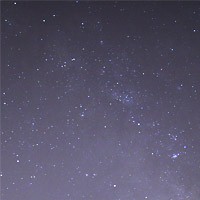
The Heart of our Milky Way Galaxy
By Craig CortisChaple’s Arc
By Glenn Chaple
Rebuilding the Weight Drive for the 8¼-inch Alvan Clark at Seagrave Memorial Observatory
By Al HallRound and Round (the Celestial Pole) We Go…
By Craig CortisMessier 6 and Messier 7
By Glenn Chaple40th Anniversary of the Apollo 11 Moon Landing
By Dave HuestisOccultation/Graze of Antares by Moon: June 6, 2009
By Dave HuestisHubble Servicing Mission is the Culmination of the Space Shuttle Program
By Jim HendricksonSearching for Extraterrestrial Signals
By Dave Huestis44 Boötis
By Glenn ChapleA Better Galaxy Guide: Late Spring
By Craig Cortis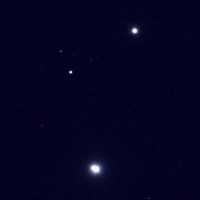
Mizar, The First Double Star
By Glenn ChapleA Better Galaxy Guide: Early Spring
By Craig CortisNGC 2362: Open Cluster in Canis Major
By Glenn ChapleA White Dwarf You can Actually See!
By Craig CortisThe Winter Circle
By Dave HuestisStruve 817 Orionis
By Glenn Chaple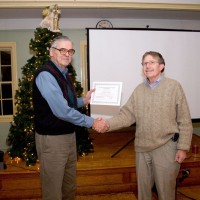
Reflections on Three Decades of Variable Star Observing
By Gerry Dyck
Heaven’s View Observatory
By Tom ThibaultA Selection of Double Stars in Andromeda
By Glenn ChapleSometimes Binoculars are Best
By Craig CortisExploring the Southern Constellations
By Craig Cortis
A Starhop Through Scutum
By Craig CortisA Selection of Double Stars in Draco
By Glenn ChapleA Selection of Double Stars in Cancer
By Glenn ChapleA Night With the Messiers
By Jim HendricksonA Selection of Double Stars in Gemini
By Glenn ChapleA Selection of Double Stars in Cygnus
By Glenn ChapleA Selection of Double Stars in Scorpius
By Glenn ChapleA Selection of Double Stars in Corona Borealis
By Glenn ChapleA Selection of Double Stars in Orion
By Glenn Chaple
The Little Blue Book That Changed My Life
By Jerry JeffreyOur Solar System of Eight Planets
By Jim HendricksonImpactors and Their Possible Explosive Effects on the Earth: Part 1
By Jerry JeffreyHow I became an Amateur Astronomer
By Marian JuskuvA Selection of Double Stars in Boötes
By Glenn ChapleVivian Hartnett Remembered
By Dave Huestis
Some Memorable Nights
By Gerry Dyck
How I became an Amateur Astronomer
By Donna Gaumond
My Life Under the Stars
By Tracey Haley
How I became an Amateur Astronomer
By Bill Gucfa
An Amateur Astronomer's Life
By Dave Huestis
How I became an Amateur Astronomer
By Gerry DyckSome Bright Spring Double Stars
By Glenn ChapleThe “Conjunction” of Frank Seagrave and Percival Lowell
By Dave Huestis
How I became an Amateur Astronomer
By Bob Howe
My Life as an Amateur Astronomer
By Steve HubbardJust Another Planet Book?
By Gerry Dyck
My Life as an Amateur Astronomer
By John KocurSome Bright Winter Double Stars
By Glenn ChapleAnnular Solar Eclipse Expedition
By Greg ShanosMars History Highlights
By Dave HuestisSome Bright Autumn Double Stars
By Glenn Chaple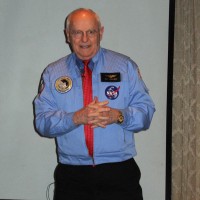
Meeting Captain Alan Bean
By Donna Gaumond
30th Anniversary of the Apollo-Soyuz Test Project
By Dave Huestis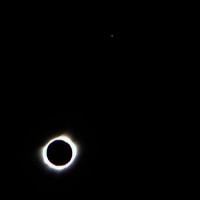
Hybrid Eclipse Expedition
By Greg ShanosSome Bright Summer Double Stars
By Glenn Chaple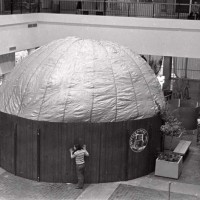
Skyscrapers Portable Planetarium Project
By Dave HuestisPortable Planetarium Show Transcript
By Dave Huestis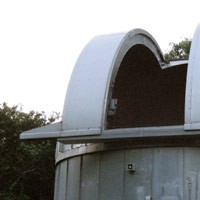
Margaret M. Jacoby Observatory
By Dave Huestis
Brian Magaw: A Remembrance
By Dave HuestisET Phone Earth
By Dave HuestisStellar Rorschach
By Dave Huestis
An Historic 8¼" Alvan Clark Returns to its Former Glory
By Al HallMars on the Net
By Dave Huestis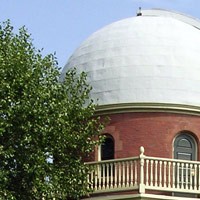
Ladd Observatory
By Dave HuestisStardust Memories: Frank E. Seagrave and Halley's Comet
By Dave HuestisCormack Planetarium
By Dave HuestisNortheast Planetary Data Center
By Dave HuestisCygnus the Swan
By Dave HuestisSwords of Fire: The Northern Lights
By Dave HuestisA Giant Constellation: Orion
By Dave HuestisSummer Double Stars
By Nan D'AntuonoSpring Double Stars: The Three Leaps of the Gazelle
By Nan D'Antuono



